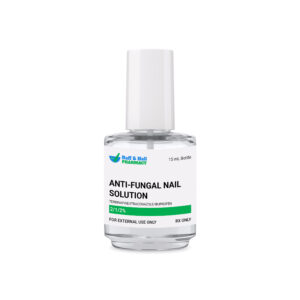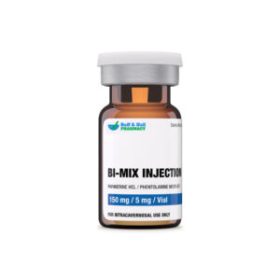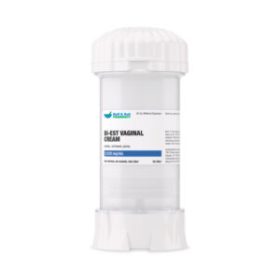Anti-Fungal Nail Solution (Terbinafine / Itraconazole / Ibuprofen) (15 mL)
Terbinafine
It works by killing fungi and is especially effective against nail infections (onychomycosis). Taken by mouth, terbinafine builds up inside the nail, helping clear the infection more effectively than older drugs like griseofulvin or itraconazole, and with fewer relapses. Cure rates with oral terbinafine are around 50%–70%.
Besides nail infections, terbinafine has shown some promise in difficult lung infections caused by Aspergillus in patients who didn’t respond to other treatments.
FDA approvals:
Topical cream (1993)
Oral tablets (1996)
OTC cream for athlete’s foot (1999)
Oral granules for kids age 4+ with scalp ringworm (2007)
Itraconazole
It is used for serious infections like:
Blastomycosis (lung/skin fungal infection)
Histoplasmosis (lung infection, sometimes spreading throughout the body)
Aspergillosis (lung infection when other drugs like amphotericin B aren’t tolerated or effective)
Onychomycosis (nail infections in non-immunocompromised patients)
Oral and esophageal candidiasis (thrush)
Itraconazole works against many fungi that ketoconazole and fluconazole target, but it’s generally stronger against Aspergillus. Different forms (capsules, solution, injection) are not interchangeable, and the FDA indications vary by form. Compared to ketoconazole, itraconazole usually causes fewer side effects.
Ibuprofen
Ibuprofen is a widely used NSAID (nonsteroidal anti-inflammatory drug) that helps with pain, inflammation, and fever. It is used for:
Arthritis (rheumatoid, osteoarthritis, psoriatic, ankylosing spondylitis)
Menstrual pain (dysmenorrhea)
Mild-to-moderate pain (e.g., headache, muscle aches, toothache)
Fever
Gout attacks
Topical creams for muscle pain have also been studied.
How it works: Ibuprofen comes as a mixture of two isomers, but only the L-isomer is active. Interestingly, the inactive D-isomer slowly converts to the active form, acting as a kind of backup supply.
Risks:
Like all NSAIDs, ibuprofen may cause stomach ulcers, bleeding, or intestinal damage with prolonged use. It can also increase the risk of heart attack and stroke, especially at higher doses or with long-term use. Because of this, the FDA recommends using the lowest effective dose for the shortest time needed.
Special caution is advised for:
Elderly patients, who are more sensitive to GI and cardiovascular risks
People with pre-existing heart disease or stomach issues
Long-term users (they may need protection with medications like PPIs or misoprostol)
Approvals:
Oral ibuprofen was FDA-approved in 1974
An IV form (ibuprofen lysine, NeoProfen) is used to help close a patent ductus arteriosus (PDA) in premature infants
This solution contains antifungal agents that inhibit the growth and reproduction of fungi. It disrupts the fungal cell membrane, leading to leakage of essential cellular components and eventual cell death. By continuously applying the solution, it prevents fungal spores from spreading and promotes the growth of healthy nail tissue. The formulation also helps reduce inflammation and irritation associated with fungal infections.
Individuals with known hypersensitivity or allergic reactions to any component of the solution should avoid using it. It is not suitable for open wounds or broken skin around the nails. Before applying, ensure the area is clean and dry. Avoid contact with eyes, mouth, and mucous membranes. If irritation, redness, or worsening symptoms occur, discontinue use and consult a healthcare professional. It is recommended to follow the usage instructions carefully to prevent unnecessary side effects.
Terbinafine (Topical & Oral)
Topical Formulations (cream/gel):
Generally well tolerated.
Most common adverse effects (1–2%):
Skin irritation, burning, pruritus, xerosis (dryness).
Similar mild reactions likely with OTC topical versions.
Oral therapy can also cause pruritus (1–2.8%).
Itraconazole
Gastrointestinal (common):
Nausea (1.7–11%), vomiting (5–7%), diarrhea (1.7–11%), abdominal pain (1.7–6%).
Dyspepsia, flatulence, constipation, gastritis, anorexia, dysgeusia, weight loss (≤4%).
Postmarketing: pancreatitis also reported.
Cardiovascular:
Edema (≤4%), hypertension (2–3%), orthostatic hypotension (1%), chest pain (3%).
Rare: congestive heart failure, pulmonary edema, QT prolongation, torsades de pointes.
Negative inotropic effect observed (↓ left ventricular ejection fraction).
Neurologic / Psychiatric:
Headache (1–10%).
Anxiety, depression (1–3%), dizziness (1.2–4%), insomnia (2%), tremor (2%).
Rare: neuropathy, paresthesia, vertigo.
Postmarketing: peripheral neuropathy, confusion, somnolence.
Visual & Auditory:
Visual impairment (<2%), blurred vision, diplopia.
Tinnitus (<2%), hypoacusis (3.3%), hearing loss (sometimes permanent, more common in elderly).
Dermatologic & Hypersensitivity:
Rash (3–9%), pruritus (≤5%), hyperhidrosis (3–4%).
Rare: TEN, Stevens-Johnson syndrome, erythema multiforme, alopecia, photosensitivity.
Serious hypersensitivity: anaphylaxis, angioedema, serum sickness.
General / Systemic:
Fever (2–7%), fatigue (1–3%), chills, rigors (<2%), malaise (1–3%).
Ibuprofen
Dermatologic:
Pruritus (1–10%) – most common reason for discontinuation in IV trials.
Rash (1–10%), including maculopapular.
Rare but severe (<1%):
Urticaria, bullous eruptions, erythema multiforme, Stevens-Johnson syndrome, TEN, exfoliative dermatitis.
Topical use: burning, stinging, redness, irritation. Rare: blistering, peeling, infection-like changes.
Hypersensitivity / Allergy:
Anaphylaxis, angioedema (rare, serious).
Caution in aspirin-sensitive asthma (cross-reactivity ~5%).
Terbinafine
facts from postmarketing use of oral terbinafine in human being pregnant are inadequate to assess a drug-associated threat of most important beginning defects, miscarriage, or destructive maternal or fetal results. 23-instances the maximum encouraged human dose. There are not any ok and properly-controlled research with topical terbinafine in pregnant women. Use topical terbinafine in the course of being pregnant most effective if surely indicated.
Itraconazole
Use of itraconazole to deal with onychomycosis is contraindicated at some stage in pregnancy and in women deliberating pregnancy. There are not any records on publicity to itraconazole throughout being pregnant for the authorized indicators. Epidemiologic studies of women exposed to brief courses of itraconazole inside the first trimester of pregnancy have pronounced no hazard of essential start defects standard and inconclusive findings at the hazard of miscarriage. however, postmarketing reports for itraconazole have included instances of congenital abnormalities. Teratogenic results have been proven in animals. pointers for prevention of opportunistic infections in HIV-infected sufferers advise that oral azole antifungals, which includes itraconazole, now not be started at some stage in pregnancy and that those sellers be discontinued in HIV-fine girls who end up pregnant.
Ibuprofen
avoid ibuprofen use for the duration of the 0.33 trimester of pregnancy (starting at 30 weeks of gestation) because use at some point of this term will increase the risk of untimely closure of the fetal ductus arteriosus. There aren’t any adequate and nicely-controlled studies in pregnant girls, and observational facts concerning embryofetal dangers of NSAID use for the duration of the first and 2d trimesters is inconclusive. all through animal replica studies in rabbits and rats with intravenous ibuprofen, no developmental consequences were reported at doses up to 0.four to zero.five-times the most encouraged human dose (MRHD) of 3,200 mg when dosed in the course of gestation; however, membranous ventricular septal defects have been mentioned in rats dealt with with 0.8-instances the MRHD on days nine and 10 of gestation. all through hard work and obstetric shipping, NSAIDs have been associated with behind schedule parturition and an improved occurrence of stillbirth.
Terbinafine
After a single terbinafine 500 mg oral dose to two volunteers, the overall excretion of terbinafine in human milk changed into zero.03% to zero.thirteen%. There are no data at the consequences at the breast-fed toddler or milk production. recall the developmental and health advantages of breast-feeding along with the mom’s scientific need for oral terbinafine and any capability damaging outcomes at the breast-fed baby from oral terbinafine or the underlying maternal condition. endorse breast-feeding moms to avoid topical software of terbinafine to the breast. similarly, given the restricted records on neonatal publicity, stop breast-feeding or discontinue topical terbinafine, thinking of the significance of the drug to the mom.
Itraconazole
Itraconazole is distributed into breast milk. Fluconazole and ketoconazole can be ability options to remember during breast-feeding. but, investigate web site of infection, nearby susceptibility patterns, and unique microbial susceptibility earlier than choosing an opportunity agent. moreover, itraconazole can be used to deal with infections in sufferers with HIV, and pointers recommend towards HIV-infected ladies breast-feeding to keep away from postnatal transmission of HIV.
Ibuprofen
because exposure to a nursing toddler is low, in particular after single or intermittent doses, ibuprofen is considered a preferred analgesic/07b031025f5f96dfa8443f843db463b6 for women who are breast-feeding. After oral administration, ibuprofen is found in breast milk at relative toddler doses of 0.06% to zero.6% of the maternal weight-adjusted every day dose. There are no reviews of damaging consequences on milk production or at the breast-fed infant. In a have a look at of milk samples from thirteen ladies who took an ibuprofen regimen of about 1 g day by day, the relative toddler dose become The relative toddler dose was maximum whilst the milk protein content material became maximum all through the colostral phase.
Store this medication in its original container at 68°F to 77°F (20°C to 25°C) and away from heat, moisture and light. Keep all medicine out of the reach of children. Throw away any unused medicine after the beyond use date. Do not flush unused medications or pour down a sink or drain.
- Hofmann H, Brautigam M, Weidinger G, et al. Treatment of toenail onychomycosis: a randomized, double-blind study with terbinafine and griseofulvin. Arch Dermatol 1995;131:919-22.
- Hankeke E, Tausch I, Vrautigam M, et al. Short-duration treatment of fingernail dermatophytosis: a randomized, double-blind study with terbinafine and griseofulvin. J Am Acad Dermatol 1995;32:72-7.
- Brautigam M, Nolting S, Schopf RE, et al. Randomised double blind comparison of terbinafine and itraconazole for treatment of toenail tinea infection. Br Med J 1995;311:919-22.
- Lamisil (terbinafine oral granules) package insert. East Hanover, NJ: Novartis Pharmaceuticals Corporation; 2019 Mar.
- Lamisil (terbinafine tablet) package insert. East Hanover, NJ: Novartis Pharmaceuticals Corporation; 2019 Mar.
- Sporanox (itraconazole) capsules package insert. Titusville, NJ: Janssen Pharmaceuticals, Inc.; 2019 Mar.
- Sporanox (itraconazole) oral solution package insert. Titusville, NJ: Janssen Pharmaceuticals, Inc.; 2019 Mar.
- Onmel (itraconazole) tablets package insert. Research Triangle Park, NC: Stiefel Laboratories, Inc.; 2012 Feb.
- Patterson TF, Thompson GR, Denning DW, et al. Practice guidelines for the diagnosis and management of Aspergillosis: 2016 update by the Infectious Diseases Society of America. Clin Infect Dis 2016;63(4):e1-e60.
- Tolsura (itraconazole) capsules package insert. Greenville, NC: Mayne Pharma; 2018 Dec.
- Como JA, Dismukes WE. Oral azole drugs as systemic antifungal therapy. N Engl J Med 1994;330:263-72.
- Borgers M. Mechanism of action of antifungal drugs, with special reference to the imidazole derivatives. Rev Inf Dis. 1980;2:520-34.
- Lamisil (terbinafine hydrochloride cream) package insert. East Hanover, NJ: Sandoz Pharmaceutical Corporation; 1993 Jun.
- Schafer-Korting M. Pharmacokinetic optimisation of oral antifungal therapy. Clin Pharmacokinet 1993;25:329-41.
- Roden, DM. Drug-induced prolongation of the QT interval. New Engl J Med 2004;350:1013-22.
- Crouch MA, Limon L, Cassano AT. Clinical relevance and management of drug-related QT interval prolongation. Pharmacotherapy 2003;23:881-908.
- Benoit SR, Mendelsohn AB, Nourjah P, et al. Risk factors for prolonged QTc among US adults: Third National Health and Nutrition Examination Survey. Eur J Cardiovasc Prev Rehabil 2005;12(4):363-368.
- Koide T, Ozeki K, Kaihara S, et al. Etiology of QT prolongation and T wave changes in chronic alcoholism. Jpn Heart J 1981;22:151-166.
- van Noord C, Eijgelsheim M, Stricker BH. Drug- and non-drug-associated QT interval prolongation. Br J Clin Pharmacol 2010;70(1):16-23.
- Galli-Tsinopoulou A, Chatzidimitriou A, Kyrgios I, et al. Children and adolescents with type 1 diabetes mellitus have a sixfold greater risk for prolonged QTc interval. J Pediatr Endocrinol Metab 2014;27:237-243.
- Health Care Financing Administration. Interpretive Guidelines for Long-term Care Facilities. Title 42 CFR 483.25(l) F329: Unnecessary Drugs. Revised 2015.
- US Public Health Service (USPHS) and the Infectious Diseases Society of America (IDSA). The Living Document: Guidelines for the Preventing Opportunistic Infections Among HIV-Infected Persons. Retrieved November 28, 2001. Available on the World Wide Web at www.aidsinfo.nih.gov.
- American Academy of Pediatrics (AAP) Committee on Drugs. Transfer of drugs and other chemicals into human milk. Pediatrics 2001;108(3):776-789.
- Centers for Disease Control and Prevention: Breastfeeding recommendation for human immunodeficiency virus (HIV), and acquired immunodeficiency virus (AIDS). Retrieved November 9, 2011. Available on the World Wide Web at: https://www.cdc.gov/breastfeeding/disease/hiv.htm– LinkOpens in New Tab
- Moretti ME, Ito S, Koren G. Disposition of maternal ketoconazole in breast milk. Am J Obstet Gynecol. 1995;173:1625-1626.
- Caldolor (ibuprofen) injection package insert. Nashville, TN: Cumberland Pharmaceuticals; 2019 Jul.
- Debley JS, Carter ER, Gibson RL, et al. The prevalence of ibuprofen-sensitive asthma in children: a randomized controlled bronchoprovocation challenge study. J Pediatr 2005;147:233-38.
- Frishman WH. Effects of nonsteroidal anti-inflammatory drug therapy on blood pressure and peripheral edema. Am J Cardiol 2002;89(suppl):18D-25D.
- National Institutes of Health (NIH). Ibuprofen monograph. LactMed: Drugs and Lactation Database. Available at http://toxnet.nlm.nih.gov/cgi-bin/sis/search2/f?./temp/~5sALjQ:1– LinkOpens in New Tab . Accessed December 4, 2015.
- Rigourd V, de Villepin B, Amirouche A, et al. Ibuprofen concentrations in human mature milk-first data about pharmacokinetics study in breast milk with AOR-10127 “Antalait” study. Ther Drug Monit 2014;36:590-596.
- Beylot C, Doutre M, Beylot-Barry M. Acute generalized exanthematous pustulosis. Semin Cutan Med Surg 1996;15(4):244-249.
- IBU (ibuprofen) tablets package insert. Shreveport, LA: Dr. Reddy’s Laboratories, Inc.; 2016 Jul.
- Ibuprofen oral suspension package insert. Allegan, MI: Perrigo New York Inc; 2017 Apr.





